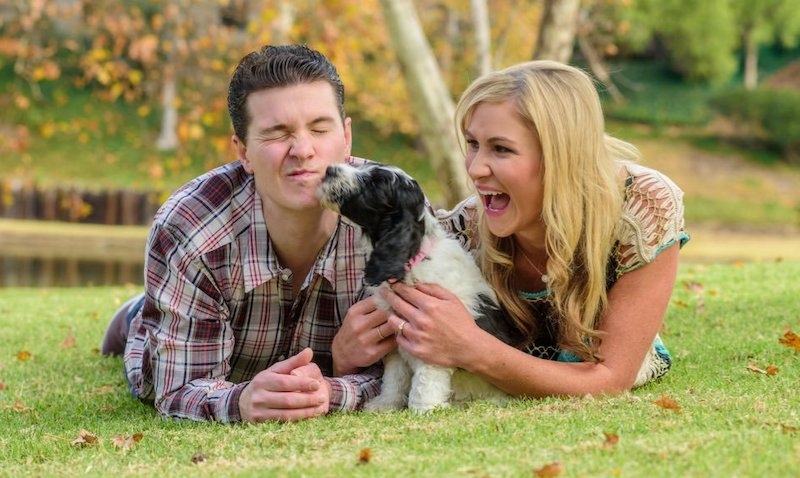Email Address
Info@themis.com
Phone Number
Fax: 001 (407) 901-6400

For dog lovers, of course, it will seem familiar that with a dogs long conversation with you as the owner, you begin to notice some reasonable activity of your pet. The more intensively your dog is included in the common activity, and the more diverse this activity is, the more you become stronger in this opinion.
It cannot be denied that in about ten years, the current scientific postulates that dogs in their behavior are guided exclusively by instincts and unconditioned reflexes that are inherited, can be destroyed. And there are reasons for this. First of all, these are observations of the behavior of dogs in unusual conditions and circumstances for them.
There are cases when dogs cross the road only at a pedestrian crossing and pay attention to the lack of transport. Many of us can hear how a lost dog returns home for many hundreds of miles periodically using passing vehicles. But even these cases can be explained by the plasticity of instinctive reactions, as a result of which the animal forms a skill, but not rational behavior. That is, having a certain set of behavioral skills, the dog simply applies them as an algorithm of sequential actions.
A dog is an animal of pack and the hierarchy within the pack is fundamental to it.
I wanted to talk more about how we correctly understand our pets, “read” their mood, possible actions and, based on this, manipulate their behavior (in the good sense of the word). There are obvious facts for the average layman that are absolutely inherent in dogs.
The hierarchy within the flock is fundamental to it. In other words, without an unequivocal understanding, who is stronger, and therefore more influential, and who is vice versa, the dog will not be able to live normally.
Even before a dog appears in your house, you should already clearly understand who in your family will be the leader for the dog and most importantly the other members of the family should have an absolute understanding that they take a higher place in the hierarchy than the dog. In order to achieve this an ideal solution would be joint care of the pet: walking, feeding, playing, training. All family members should be involved in all these activities. In this matter everything in the dog’s head is quite simple: who ever feeds those is main, who walked in an environment filled with a variety of interesting smells those is main, etc. Otherwise, if you do not build the correct hierarchy then at best the dog will ignore the member of the family who in its opinion takes a lower place. Children can be traditionally included in this list. If you do not let the dog know at the initial stages of your interaction that your child means more to you than the dog the dog will definitely take a dominant position in relation to him. Do it by instantly suppressing various attempts of dog to disobey your child (grin, bite, roar, etc. .), no matter what he does with the pet.
Discipline the sequence of actions in yourself and in your family members and it will be easier for the dog to understand and react correctly.
The dog easily enough remembers the algorithm of actions of almost any complexity.
Consistency in your actions is the key to a successful interaction between the dog and you. When seeking a specific reaction or behavior from a dog you must first adhere to the same algorithm without changing it under any circumstances. For example, if you do not want the dog to go into a certain room, having developed this understanding from it, never make exceptions. If you want to pet the dog or give her a treat get up from the bed and do it in the hall but do not let the dog "just once" go into the room. This action will be interpreted by the dog as a real opportunity to enter the room in the future. And no matter how much you subsequently "beat" it for its unauthorized passage into the room, it is not able to compare why yesterday it was possible but today not. The dog will not match the punishment with entering the room. It will interpret the punishment as the host’s bad mood.
Discipline the sequence of actions in yourself and in your family members, and it will be easier for the dog to understand and react correctly.
By the way, the simplest sequences that you use very often when communicating with a dog are reward and punishment. The sign of a correctly executed command means a desired treat for a dog. The punishment that follows immediately after an unwanted action from a dog does not make it want to repeat this action.
This is the most important point for understanding by the owner. Under no circumstances should you "humanize" your relationship with a dog. This is a direct path to the destruction of this relationship.
What does it mean to "humanize" your relationship with a dog? This means misleading yourself that the dog thinks akin to you. You begin to build on human psychology in your actions and the dog begins to use it. As a result, the roles and places in the hierarchy are redistributed: you begin to adapt to the dog’s habits which you gave birth. The worst thing in this situation is that turning the river back in this case is very difficult, especially with large dog breeds.
Summarizing all of the above, the main recommendation is to unconditionally take into account in interaction with the dog all the facts inherent in its behavior that are currently known. Nevertheless, we will not discount the possible conscious ability to act of our pets. It is not discovered now but in some cases vividly demonstrated by some representatives of the canine world.